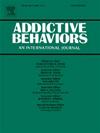Predictors of treatment attrition among individuals in substance use disorder treatment: A machine learning approach
IF 3.7
2区 医学
Q1 PSYCHOLOGY, CLINICAL
引用次数: 0
Abstract
Background
Early treatment discontinuation in substance use disorder treatment settings is common and often difficult to predict. We leveraged a machine learning approach (i.e., random forest) to identify individuals at risk for treatment attrition, and specific factors associated with treatment discontinuation.
Method
Participants (N = 29,809) were individuals ≥ 18 years who attended substance use disorder treatment facilities in the United States. Using random forest, we aimed to predict three outcomes (1) leaving against medical advice (AMA), (2) discharging involuntarily, and (3) discharging early for any reason. Predictors included participant demographics, substance use the month before and at intake, indices of mental and physical health, as well as treatment center and program type.
Findings
We observed low to moderate area under the curve (range = 0.631–0.671), high negative predictive values (range = 0.853–0.965), and low positive predictive values (0.088–0.336) across the three treatment attrition outcomes. The most robust predictors of the three outcomes included treatment center, treatment type, and participant age. Additional predictors of the three outcomes included employment status; reason for treatment; primary drug at intake and frequency of use; prescription opioid, benzodiazepine, or heroin use at intake; living status at intake; and driving under the influence prior to treatment.
Conclusions
Our models were able to accurately identify individuals who remained in treatment, but not those who left treatment prematurely. The most robust predictors of treatment discontinuation were treatment center and program type, suggesting that targeting treatment facility features may have a significant impact on reducing treatment attrition and improving long-term recovery.
药物使用障碍治疗中个体治疗损耗的预测因素:一种机器学习方法。
背景:在物质使用障碍的治疗设置早期治疗中断是常见的,往往难以预测。我们利用机器学习方法(即随机森林)来识别有治疗损耗风险的个体,以及与治疗中断相关的特定因素。方法:参与者(N = 29,809)是在美国参加物质使用障碍治疗机构的≥18岁的个体。使用随机森林,我们的目的是预测三种结果(1)违背医疗建议(AMA)离开,(2)非自愿出院,(3)因任何原因提前出院。预测因素包括参与者的人口统计数据、摄入前一个月和摄入时的物质使用情况、心理和身体健康指数,以及治疗中心和项目类型。结果:我们观察到,在三种治疗消耗结局中,曲线下面积低至中等(范围= 0.631-0.671),阴性预测值高(范围= 0.853-0.965),阳性预测值低(0.088-0.336)。三个结果最可靠的预测因子包括治疗中心、治疗类型和参与者年龄。三个结果的其他预测因素包括就业状况;治疗原因;摄入时的主要药物和使用频率;服用处方阿片类药物、苯二氮卓类药物或海洛因;入院时的生活状况;以及治疗前的酒后驾车。结论:我们的模型能够准确识别继续接受治疗的个体,但不能识别过早离开治疗的个体。治疗中心和项目类型是治疗中断最可靠的预测因素,这表明针对治疗设施的特征可能对减少治疗损耗和改善长期康复有重大影响。
本文章由计算机程序翻译,如有差异,请以英文原文为准。
求助全文
约1分钟内获得全文
求助全文
来源期刊

Addictive behaviors
医学-药物滥用
CiteScore
8.40
自引率
4.50%
发文量
283
审稿时长
46 days
期刊介绍:
Addictive Behaviors is an international peer-reviewed journal publishing high quality human research on addictive behaviors and disorders since 1975. The journal accepts submissions of full-length papers and short communications on substance-related addictions such as the abuse of alcohol, drugs and nicotine, and behavioral addictions involving gambling and technology. We primarily publish behavioral and psychosocial research but our articles span the fields of psychology, sociology, psychiatry, epidemiology, social policy, medicine, pharmacology and neuroscience. While theoretical orientations are diverse, the emphasis of the journal is primarily empirical. That is, sound experimental design combined with valid, reliable assessment and evaluation procedures are a requisite for acceptance. However, innovative and empirically oriented case studies that might encourage new lines of inquiry are accepted as well. Studies that clearly contribute to current knowledge of etiology, prevention, social policy or treatment are given priority. Scholarly commentaries on topical issues, systematic reviews, and mini reviews are encouraged. We especially welcome multimedia papers that incorporate video or audio components to better display methodology or findings.
Studies can also be submitted to Addictive Behaviors? companion title, the open access journal Addictive Behaviors Reports, which has a particular interest in ''non-traditional'', innovative and empirically-oriented research such as negative/null data papers, replication studies, case reports on novel treatments, and cross-cultural research.
 求助内容:
求助内容: 应助结果提醒方式:
应助结果提醒方式:


